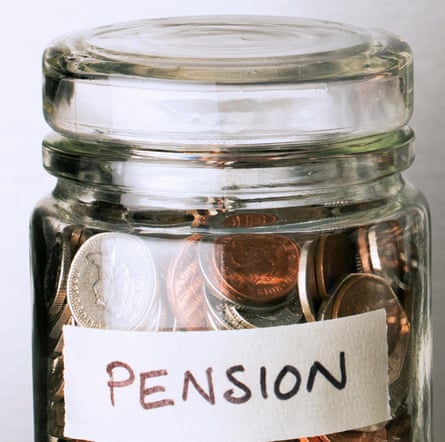
Make a start
If you are self-employed, it’s up to you to save for retirement, as you won’t be enrolled into a company pension. But sorting out your own pension provision can be daunting, particularly when you are managing a fluctuating income and running your own business.
Almost half – 45% – of freelance and other self-employed workers are not currently saving into a pension, according to the latest research from the Association of Independent Professionals and the Self-Employed.
But you can typically save from about £50 a month into a personal pension, and it is important to start somewhere. After all, you will need additional income on top of the full new flat-rate state pension, currently £203.85 a week, or £10,600 a year, which you get if you have made enough national insurance contributions.
If you are self-employed, pensions are still worth itPensionBee’s Becky O’Connor
Becky O’Connor, the director of public affairs at the firm PensionBee, says: “If you are self-employed, pensions are still worth it. You might not get contributions from your employer but you will still get tax relief on contributions. This is an instant uplift on what you put in.”
As a basic-rate taxpayer, tax relief means that it costs £80 to pay £100 into your pension, while it will cost higher-rate taxpayers £60 to pay £100 into their pension.
Pick your pension type
You have several choices. You could choose a personal pension that offers a range of ready-made plans to suit different types of savers. If you pay into a stakeholder pension, your contributions will usually be paid into a default fund.
A self-invested personal pension (Sipp) typically gives you greater investment choice, including individual shares and investment trusts, for example. It is up to you to choose the investments you want to hold, and this type of pension is usually more suitable for people who are comfortable making their own investment decisions.
 View image in fullscreenResearch suggests 45% of freelance and other self-employed workers are not currently saving into a pension. Photograph: Fredrick Kippe/Alamy
View image in fullscreenResearch suggests 45% of freelance and other self-employed workers are not currently saving into a pension. Photograph: Fredrick Kippe/Alamy
Helen Morrissey, the head of retirement analysis at the investment platform Hargreaves Lansdown, says: “If you have strong investment views, check to see what level of investment choice different providers can offer. If you would prefer to be invested in a ready-made solution, you may want to look at standard personal pensions.”
Choose your provider
There are plenty of simple personal pensions on offer from a growing number of digital providers. The online pension providers PensionBee and Penfold, for example, are designed for the self-employed, and let you consolidate your old pensions into a single plan if you wish.
Other investment providers offering personal pensions include Nutmeg and Wealthify.
If you are looking for greater investment choice through a Sipp, the investment platforms AJ Bell, Hargreaves Lansdown and interactive investor enable you to choose from thousands of funds and other investment options.
Bear in mind that moving old pensions into your current plan may not be the right move, though, and if you are unsure, seek professional financial advice.
Assess your risk
Before choosing your personal pension plan, decide on your risk profile. Generally, the sooner you plan to draw an income from your pension, the less risk you should take. For example, Penfold offers four different risk levels for its standard plan, as well as sustainable and Sharia-compliant portfolio options.
If you are decades away from retirement, you can afford to take more risk to hopefully generate greater investment growth over time.
If you are closer to retirement, you may want to choose a lower-risk pension plan, so that your returns are less affected by stock market movements.
Check charges and flexibility
Look closely at the charges you will have to pay, as these can eat into your retirement pot over the years. You will usually either pay a percentage charge or a fixed fee.
Nutmeg’s charges, for example, range from 0.45% to 0.75% on pots of up to £100,000, while PensionBee’s range from 0.5% to 0.95%, depending on the plan you choose. There may be other costs, too – for example, with Nutmeg, there are fund costs (perhaps about 0.2%-0.3%) on top.
Also, consider flexibility. O’Connor says: “Find a personal pension provider that allows flexible payments, if this makes more sense for you than regular monthly contributions. This way, if you get paid unpredictably and sometimes in large chunks, you can simply add a proportion of your payments in, as and when you get them.”
Consider other options
You don’t have to focus solely on pensions when you are saving for retirement. Stocks and shares individual savings accounts (Isas) are another option. You do not receive tax relief on your contributions but there is less red tape around how you access your money. You can invest up to £20,000 in an Isa this tax year.
Almost half, or 45%, of freelance and other self-employed workers are not currently saving into a pensionHargreaves Lansdown’s Helen Morrissey
Morrissey says: “Many self-employed people are put off pensions because they cannot access the money within them until at least age 55 (going up to 57 in 2028).”
However, she adds that lifetime Isas (Lisas) are another valuable option, as you get a 25% bonus that works in a similar way to basic-rate tax relief on a pension. You can use a lifetime Isa to save for later life (you can withdraw money at age 60) or buy your first home.
You must be 18 or over but under 40 to open one, and you can put in up to £4,000 a year until you are 50. The government will add a 25% bonus to your savings, up to a maximum of £1,000 a year.
“If times are tough and you need to access the money you have saved in a Lisa, you can do so subject to a 25% penalty,” Morrissey says.
Carry on contributing
It can be tough to make ends meet as living costs soar, and difficult to find the spare cash for pension contributions. But pay in however much you can afford, when you can. Stopping contributions completely could have a big impact on your retirement income in years to come, particularly if you don’t restart your payments.
Also, don’t be deterred by stock market downturns. Remember that it’s during these times that your money buys more investments, so contributing to your pot during a rocky period may boost your returns in the long run.
 View image in fullscreenDon’t let stock market downturns deter you. Photograph: James Thew/Alamy
View image in fullscreenDon’t let stock market downturns deter you. Photograph: James Thew/Alamy
Ultimately, the amount you end up with in your pension will depend on how much you have paid in over the years, and how your investments have performed, after charges.
You can use the MoneyHelper pension calculator to see what income you could end up with based on your monthly pension contributions.
